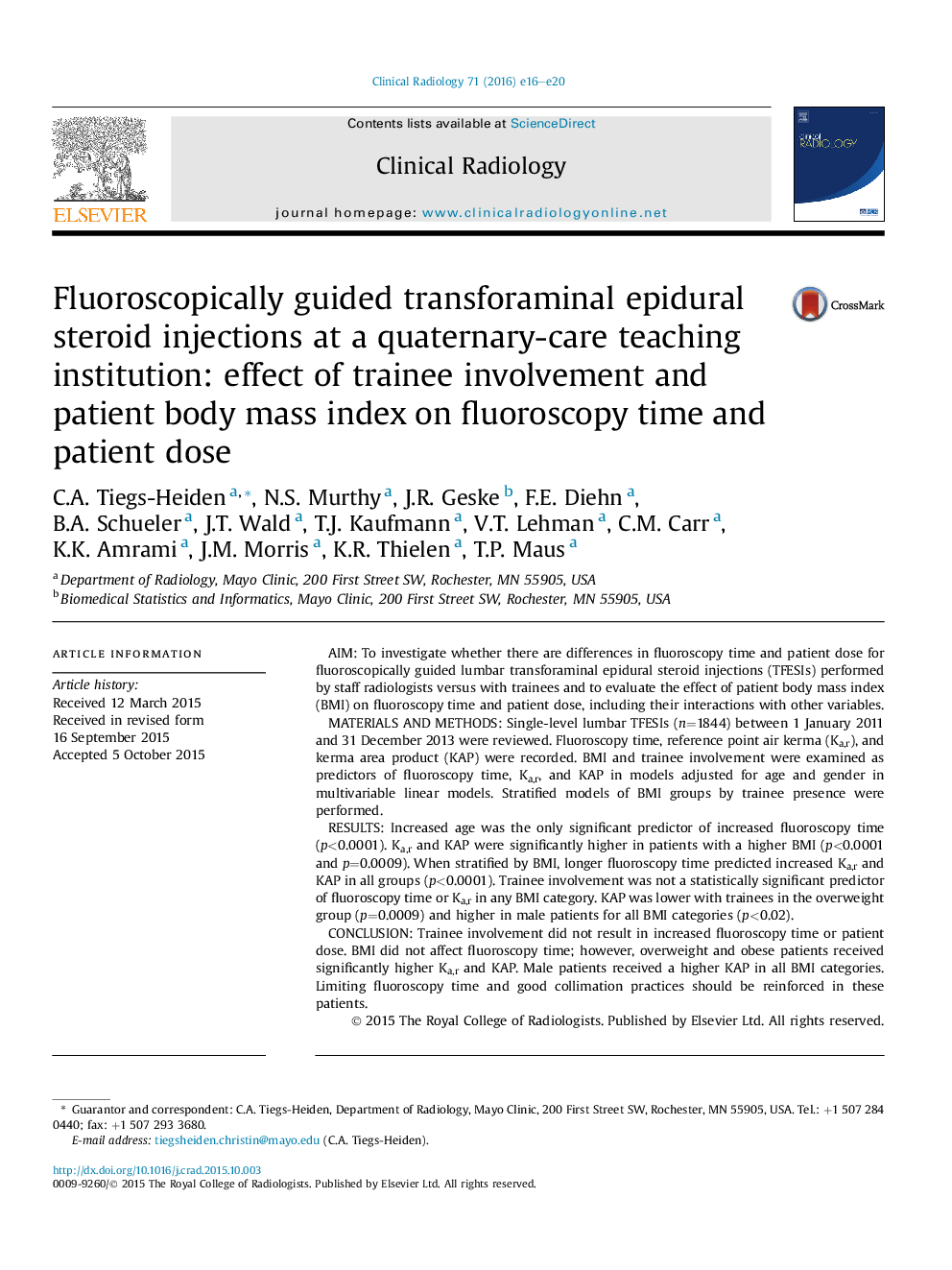| کد مقاله | کد نشریه | سال انتشار | مقاله انگلیسی | نسخه تمام متن |
|---|---|---|---|---|
| 3981440 | 1257683 | 2016 | 5 صفحه PDF | دانلود رایگان |
• Trainee involvement did not contribute to increased fluoroscopy time or dose.
• BMI did not affect fluoroscopy time.
• Overweight and obese patients received significantly higher Ka,r and KAP.
AimTo investigate whether there are differences in fluoroscopy time and patient dose for fluoroscopically guided lumbar transforaminal epidural steroid injections (TFESIs) performed by staff radiologists versus with trainees and to evaluate the effect of patient body mass index (BMI) on fluoroscopy time and patient dose, including their interactions with other variables.Materials and methodsSingle-level lumbar TFESIs (n=1844) between 1 January 2011 and 31 December 2013 were reviewed. Fluoroscopy time, reference point air kerma (Ka,r), and kerma area product (KAP) were recorded. BMI and trainee involvement were examined as predictors of fluoroscopy time, Ka,r, and KAP in models adjusted for age and gender in multivariable linear models. Stratified models of BMI groups by trainee presence were performed.ResultsIncreased age was the only significant predictor of increased fluoroscopy time (p<0.0001). Ka,r and KAP were significantly higher in patients with a higher BMI (p<0.0001 and p=0.0009). When stratified by BMI, longer fluoroscopy time predicted increased Ka,r and KAP in all groups (p<0.0001). Trainee involvement was not a statistically significant predictor of fluoroscopy time or Ka,r in any BMI category. KAP was lower with trainees in the overweight group (p=0.0009) and higher in male patients for all BMI categories (p<0.02).ConclusionTrainee involvement did not result in increased fluoroscopy time or patient dose. BMI did not affect fluoroscopy time; however, overweight and obese patients received significantly higher Ka,r and KAP. Male patients received a higher KAP in all BMI categories. Limiting fluoroscopy time and good collimation practices should be reinforced in these patients.
Journal: Clinical Radiology - Volume 71, Issue 1, January 2016, Pages e16–e20
